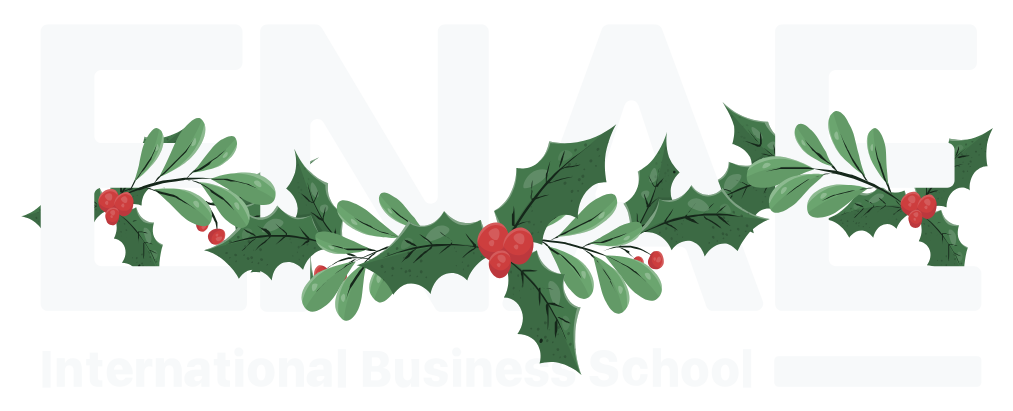International Finance
Immerse yourself in the fascinating world of International Finance with our specialised course. This programme will provide you with an in-depth and practical understanding of the global financial principles that drive the functioning of international markets.
From managing risk in global environments to evaluating international investments, this course will cover the critical aspects of International Finance. You will learn to analyse global economic dynamics, understand the factors that influence exchange rates and explore effective financial strategies in a globalised context.
The course is designed to provide you with the skills and knowledge you need to meet the financial challenges in international markets. With expert faculty and a practical approach, you will be prepared to make informed and strategic decisions in the complex global financial landscape. Develop your expertise in International Finance and excel in the global financial arena!
Discover the key modules and concepts
SHORT-TERM FINANCING
INTERNATIONAL METHODS OF PAYMENT
- Underlying structure for the international payments.
- Introduction to International Methods of payment.
- International Payment Order. EU regulation. SEPA.
- Cashier’s Check.
- Checking Account Check.
- Documentary Collection against payment.
- Documentary Collection against acceptance.
- Clean Collection.
- Direct Debit in the European Union.
- Documentary credit (Letter of credit).
INTERNATIONAL GUARANTEES
- Standby Letter of Credit.
- Demand Guarantee.
EXPORT CREDIT INSURANCE
FOREIGN EXCHANGE MARKETS
- Foreign currency: concept
- Currency: convertibility and quotation
- Currency markets (forex). Location and dimension
- The exchange rate: main concepts
- Spot Market.
- Forward Market.
EXCHANGE RISK MANAGEMENT
- Forward.
- Currency options.
MEDIUM- AND LONG-TERM FINANCING
INTRODUCTION AND OBJECTIVES OF THE MODULE.
- Introduction to long term finances, and objectives to be covered.
- Economic and financial feasibility, previous to internationalization.
- Classification of foreign trade operations attending to its financing.
Case study: Jonas Family Business and Co.
LONG TERM FINANCING INSTRUMENTS.
- Factoring.
- Forfaiting.
- Suppliers credit.
- Buyers credit.
Case study: Invoice Factoring Case Study – Business Consulting, Inc.
Further reading:
- How forfaiting works.
- Buyer’s credit note.
LONG TERM FINANCING INSTRUMENTS WITH OFFICIAL SUPPORT
- The OECD Consensus or Arrangement.
- The Fund for Internationalization – FIEM.
- Compañía Española de Seguro de Crédito a la Exportación – CESCE
- Instituto de Crédito Oficial – ICO.
- Compañía Española de Financiación del Desarrollo – COFIDES.
Further reading and technical documents:
- The OECD Consensus.
- OECD Country risk classification.
- OECD Multilateral and Regional Institutions Risk Classifications.
- OECD Export Credits work.
- The Arrangement on Export Credits.
- OECD Export Credits Sector Understandings.
- FIEM note.
- FIEM presentation and success stories.
- CESCE note.
- ICO Institutional presentation.
- ICO note.
- COFIDES note.
- COFIDES History.
- COFIDES Success Stories.
VIABILITY OF INTERNATIONAL INVESTMENT PROJECTS
VIABILITY OF INVESTMENTS
- Introduction.
- The value of money in the time
- Annuities applied to investments.
- Types of viabilities: investment selection
- Investment concept. Variables in projects.
- Net Present Value (NPV)
- Internal Rate of Return (IRR)
- Investment project evaluation under uncertain and risk
- Break-even Analysis
- Sensitivity Analysis
- Scenario Method
BUSINESS PLAN
- Executive summary
- Owner´s background
- Products and services
- The market
- Market research
- Desk research
- Field research
- Marketing strategy
- Competitor analysis
- Operations and logistics
- Costs and pricing strategy
- Financial forecasts
- Sales and costs forecast
- Personal survival budget
- Cashflow forecast
- Costs table
- Back-up plan
FINANCIAL STATEMENTS: PRACTICAL APPLICATION
- The Balance Sheet
- The Income Statement
- The Cash Flow Statement
admission process






METHODOLOGY
ENAE Business School employs a Learning by doing methodology, which combines the presentation of concepts with practical application through real business cases. Teamwork is encouraged to achieve the integration of participants, improving the resolution of cases through the diversity of perspectives, opinions and experiences. Learning comes not only from the trainers, but also from the professional experiences shared among peers.
Objetives
- Identify the organisation of the foreign exchange markets, as well as the financial instruments that make them up.
- Identify business opportunities through the combined analysis of price levels and exchange rates.
- Make decisions regarding the coverage of the contractual exchange risk using the appropriate financial instruments.
- Analyse how Export Credit Insurance works and its compatibility with means of payment.
- To identify the common elements in all medium and long-term financing.
- To differentiate the financing structures applicable depending on whether the operation is carried out in an emerging country or in a developed country.
- To interpret how the terms and conditions of the commercial contract affect the financing of medium- and long-term operations.
- Diagnose the different variables that may affect an investment project in order to generate the Business Plan.
- Diagnose the different variables that can affect a project to generate the Business Plan.
- To know the necessary steps for the execution of a Business Plan and to obtain the necessary data for the preparation of the Feasibility Plan.
- To analyse the interrelations between the different parts of the project and the Feasibility Plan to be projected.
Meet our Faculty
Our exclusive “Learn by doing” method, allows our staff to track student progress more effectively which help them to identify a student's strengths, weaknesses and requirements. Better communication takes place through our hybrid learning methodology, as students can use our different digital platforms to connect and stay in touch with teachers and peers.















